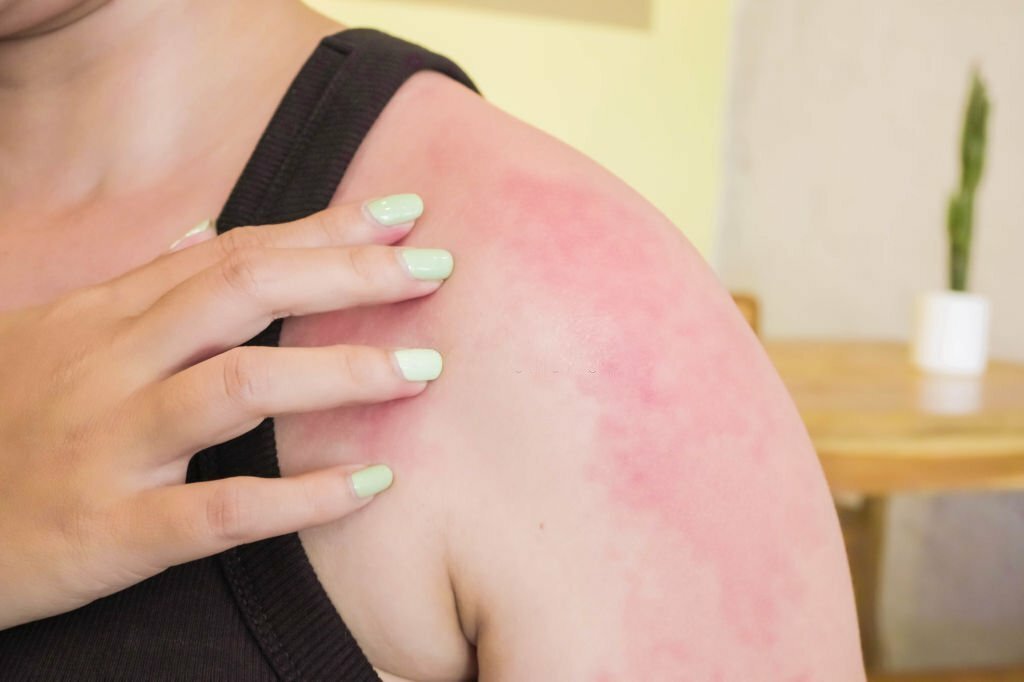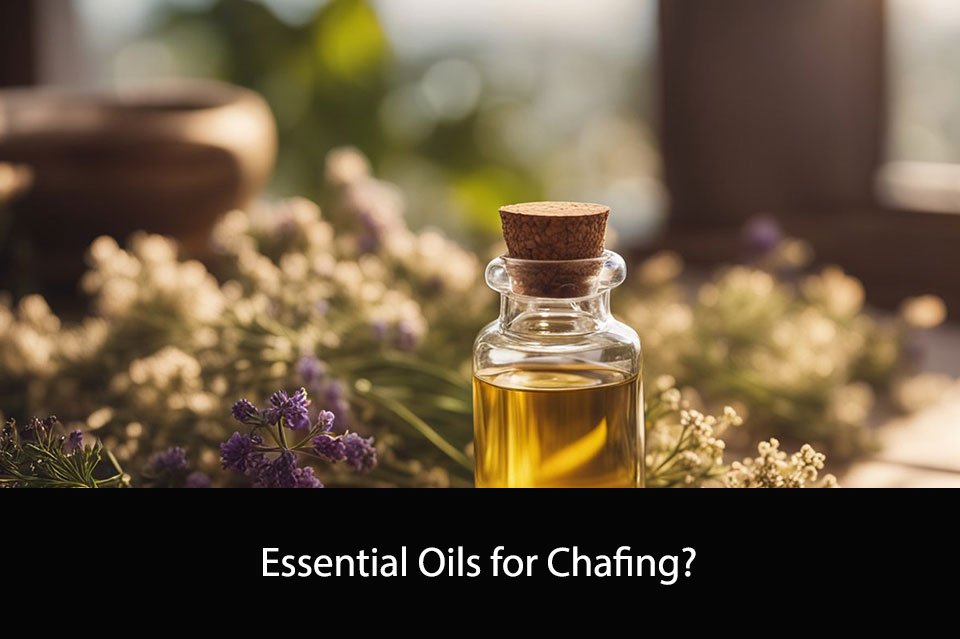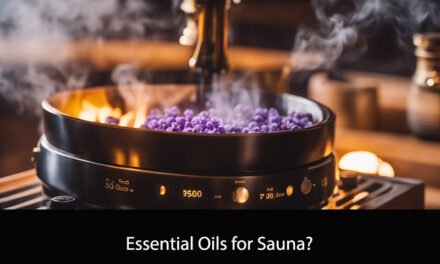Essential oils have been used for centuries to treat a variety of ailments, from headaches to skin conditions. One such condition that can benefit from the use of essential oils is chafing. Chafing occurs when the skin rubs against clothing or other skin, causing irritation and discomfort. It is a common problem for athletes, hikers, and anyone who engages in physical activity.
Fortunately, there are several essential oils that can help soothe and heal chafed skin. Some of the most effective oils include lavender, tea tree, and peppermint. These oils have anti-inflammatory and antiseptic properties that can reduce swelling and prevent infection. They also have a cooling effect that can provide immediate relief from itching and burning.
Understanding Chafing

Chafing is a common skin irritation that occurs when skin rubs against other skin or clothing repeatedly. This friction causes the skin to become red, sore, and sometimes even blistered. Chafing can occur anywhere on the body, but it is most common in areas where skin rubs against skin, such as the thighs, underarms, and groin.
Causes of Chafing
Chafing can be caused by a variety of factors, including:
- Moisture: When the skin is moist, it is more prone to chafing. Sweat, rain, and even water from a shower or bath can all contribute to moisture-related chafing.
- Friction: Any activity that causes skin to rub against other skin or clothing can lead to chafing. This includes exercise, walking, and even wearing tight or ill-fitting clothing.
- Heat: When the body gets hot, the skin can become more sensitive and prone to chafing. This is why chafing is more common during the summer months.
Symptoms of Chafing
The symptoms of chafing can vary depending on the severity of the irritation. Some common symptoms include:
- Redness: The affected area may appear red or inflamed.
- Soreness: The skin may feel tender or sore to the touch.
- Burning: Chafing can cause a burning sensation, especially when the affected area is exposed to water or sweat.
- Blisters: In severe cases, chafing can cause blisters to form on the skin.
Understanding the causes and symptoms of chafing is an important first step in preventing and treating this common skin irritation. By taking steps to reduce friction, moisture, and heat, you can help keep your skin healthy and free from chafing.
Essential Oils: A Brief Overview

What are Essential Oils?
Essential oils are highly concentrated natural oils that are extracted from plants. They are called “essential” because they contain the essence of the plant’s fragrance and flavor. Essential oils are obtained through a process of steam distillation or cold pressing, and they can be used for a variety of purposes, including aromatherapy, massage, and skincare.
Benefits of Essential Oils
Essential oils have been used for centuries for their therapeutic properties. They are known for their ability to promote relaxation, improve mood, and reduce stress. Essential oils can also be used to treat a variety of physical ailments, such as headaches, muscle pain, and digestive issues. Some essential oils have anti-inflammatory and antibacterial properties, making them useful for treating skin conditions like chafing.
Here are some of the most popular essential oils for chafing:
- Lavender: Lavender essential oil is known for its soothing and calming properties. It can help reduce inflammation and irritation, making it a great choice for treating chafed skin.
- Tea Tree: Tea tree essential oil has antibacterial and antifungal properties, making it an effective treatment for skin infections and irritations.
- Chamomile: Chamomile essential oil is a natural anti-inflammatory and can help soothe and heal irritated skin.
- Peppermint: Peppermint essential oil has a cooling effect that can help relieve the discomfort of chafing.
When using essential oils for chafing, it’s important to dilute them with a carrier oil like coconut oil or jojoba oil. Essential oils are highly concentrated and can be irritating to the skin if used undiluted. Always do a patch test before using any new essential oil on your skin.
Essential Oils for Chafing
Chafing can be a painful and uncomfortable experience, especially for those who are active or spend a lot of time in hot and humid environments. Essential oils are a natural and effective way to soothe and heal chafed skin. In this section, we will discuss some of the best essential oils for chafing.
Lavender Oil
Lavender oil is known for its calming and healing properties. It has anti-inflammatory and antiseptic properties that can help reduce redness and irritation caused by chafing. Lavender oil can also help speed up the healing process by promoting cell regeneration. To use lavender oil for chafing, mix a few drops with a carrier oil such as coconut oil and apply it to the affected area.
Tea Tree Oil
Tea tree oil is a powerful antiseptic and anti-inflammatory oil that can help soothe and heal chafed skin. It can also help prevent infection and reduce the risk of scarring. To use tea tree oil for chafing, mix a few drops with a carrier oil such as almond oil and apply it to the affected area.
Chamomile Oil
Chamomile oil is a gentle and soothing oil that can help reduce inflammation and irritation caused by chafing. It has anti-inflammatory and antiseptic properties that can help speed up the healing process. Chamomile oil can also help calm the skin and reduce redness. To use chamomile oil for chafing, mix a few drops with a carrier oil such as jojoba oil and apply it to the affected area.
Calendula Oil
Calendula oil is a natural anti-inflammatory and antiseptic oil that can help soothe and heal chafed skin. It can also help reduce pain and discomfort caused by chafing. Calendula oil can also help prevent infection and promote the growth of new skin cells. To use calendula oil for chafing, mix a few drops with a carrier oil such as grapeseed oil and apply it to the affected area.
How to Use Essential Oils for Chafing

Chafing can be a painful and uncomfortable experience. Fortunately, essential oils can help to alleviate the symptoms of chafing. Here are a few ways to use essential oils for chafing:
Direct Application
One of the easiest ways to use essential oils for chafing is to apply them directly to the affected area. To do this, mix a few drops of your chosen essential oil with a carrier oil, such as coconut oil or almond oil. Apply the mixture to the affected area and gently massage it into the skin.
Oil Compress
Another way to use essential oils for chafing is to create an oil compress. To do this, mix a few drops of your chosen essential oil with warm water. Soak a clean cloth in the mixture and wring out any excess liquid. Place the compress on the affected area and leave it in place for 10-15 minutes.
Bath Soak
A bath soak can also be an effective way to use essential oils for chafing. Add a few drops of your chosen essential oil to a warm bath and soak for 15-20 minutes. This can help to soothe the skin and promote healing.
Remember to always dilute essential oils before applying them to the skin. Essential oils can be strong and may cause irritation if used undiluted. If you experience any adverse reactions, discontinue use immediately.
By using essential oils, you can help to alleviate the discomfort of chafing and promote healing. Try these methods to see which works best for you.
Precautions and Side Effects
Skin Irritation
When using essential oils for chafing, it is important to take precautions to avoid skin irritation. Essential oils are highly concentrated and can cause skin irritation if not diluted properly. It is recommended to always dilute essential oils with a carrier oil before applying to the skin. Additionally, it is important to perform a patch test before using any essential oils to ensure that you are not allergic to them.
Allergic Reactions
While essential oils are generally safe, some individuals may experience allergic reactions. If you experience any itching, redness, or swelling after using an essential oil, discontinue use immediately and seek medical attention if necessary. It is also important to note that some essential oils may interact with medications, so it is important to consult with a healthcare professional before using essential oils if you are taking any medications.
Overall, using essential oils for chafing can be a safe and effective remedy when used properly. By taking precautions and being aware of potential side effects, you can safely reap the benefits of essential oils for chafing relief.
Conclusion
In conclusion, essential oils can be an effective natural remedy for chafing. They can help soothe irritated skin, reduce inflammation, and prevent further chafing. However, it’s important to note that essential oils should never be used as a replacement for medical treatment or advice.
When using essential oils for chafing, it’s important to dilute them properly and perform a patch test to ensure you’re not allergic or sensitive to the oil. Some essential oils may also be more effective than others, so it’s important to do your research and choose the best oil for your specific needs.
Overall, essential oils can be a great addition to your chafing treatment plan. By using them in conjunction with other remedies and taking preventative measures, you can help alleviate discomfort and promote healing.
Frequently Asked Questions

How can I use essential oils to soothe chafed skin?
To use essential oils for soothing chafed skin, dilute the oil in a carrier oil such as coconut oil or almond oil. Apply the mixture to the affected area and gently massage it into the skin. You can also add a few drops of essential oil to a warm bath and soak in it for 20-30 minutes.
What are some essential oils that can help with chafing?
Some essential oils that can help with chafing include lavender oil, tea tree oil, chamomile oil, peppermint oil, and eucalyptus oil. These oils have anti-inflammatory and soothing properties that can help reduce pain and irritation.
Can essential oils be used to prevent chafing?
Yes, essential oils can be used to prevent chafing. You can mix a few drops of essential oil with a carrier oil and apply it to areas that are prone to chafing, such as the inner thighs or underarms. This helps to reduce friction and prevent chafing.
What are some natural remedies for chafing?
In addition to essential oils, there are several natural remedies for chafing. These include applying aloe vera gel, coconut oil, or shea butter to the affected area. You can also use cornstarch or talcum powder to absorb moisture and reduce friction.
How long does it take for essential oils to heal chafing?
The healing time for chafing can vary depending on the severity of the condition. Essential oils can help to soothe and reduce inflammation, but it may take several days or even weeks for the skin to fully heal.
Are there any precautions I should take when using essential oils for chafing?
It is important to dilute essential oils in a carrier oil before applying them to the skin. Some essential oils can be irritating to the skin if used undiluted. It is also important to patch test the oil on a small area of skin before using it on larger areas. If you experience any irritation or discomfort, discontinue use immediately.





